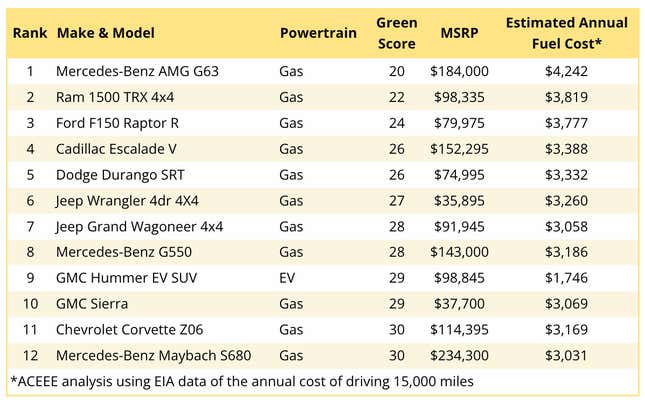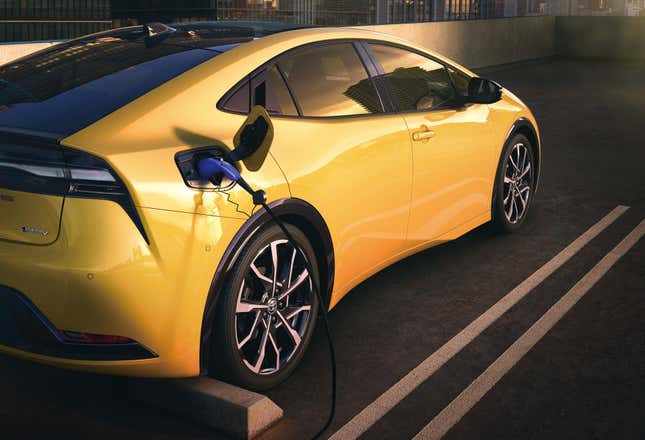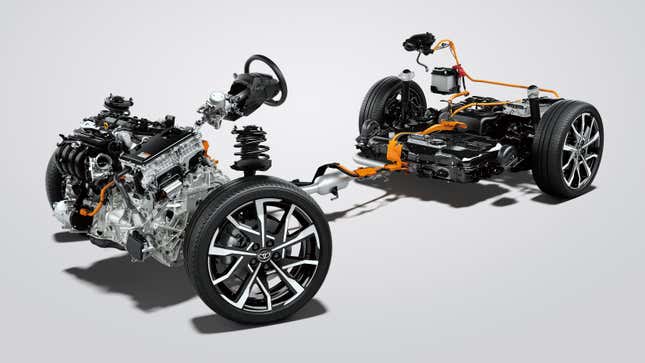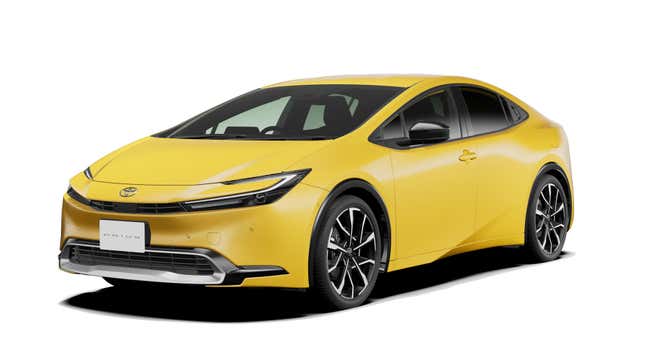New EVs Still Can’t Beat The Efficiency Of A Plug-In Hybrid

The Toyota Prius Prime has beat out the latest EVs for the title of greenest car. Despite more EVs coming to market, none of the latest fully-electric vehicles in the U.S. managed to outdo the efficiency of the humble Prius plug-in, according to the Washing Post and recent findings in the 2024 GreenerCars report.
Andy Answers Your Questions on the 2023 Toyota Prius
The Prius Prime has held on to its title as the greenest car for years thanks to its small size and low weight, which modern EVs eschew for the sake of greater range and unnecessary features that not only increase their prices, but, more importantly, inflate their size and weight. It doesn’t matter how green your EV is if it’s powered by a massive battery, which costs precious resources and would go unused by most Americans whose daily distance requirements come in at an average of 27 miles. From the Washington Post:
…a new report from the American Council for an Energy Efficient Economy suggests that the “greenest” car in America may not be fully electric. The nonprofit group, which has rated the pollution from vehicles for decades, says the winning car this year is the Toyota Prius Prime SE, a plug-in hybrid that can go 44 miles on electricity before switching to hybrid.
“It’s the shape of the body, the technology within it, and the overall weight,” said Peter Huether, senior research associate for transportation at ACEEE. “And all different types of Priuses are very efficient.”
[…]
The analysis shows that simply running on electricity is not enough to guarantee that a car is “green” — its weight, battery size and overall efficiency matter, too. While a gigantic electric truck weighing thousands of pounds might be better than a gas truck of the same size, both will be outmatched by a smaller, efficient gas vehicle. And the more huge vehicles there are on the road, the harder it will be for the United States to meet its goal of zeroing out emissions by 2050.
The GreenerCars report analyzes 1,200 cars available in 2024, assessing both the carbon dioxide emissions of the vehicle while it’s on the road and the emissions of manufacturing the car and battery. It also assesses the impact of pollutants beyond carbon dioxide, including nitrogen oxides, carbon monoxide and particulate matter — all of which can harm human health.
Of the 1,200 vehicles tested in the GreenerCar report, the Prius Prime PHEV came in with the highest score of 71 points out of a possible 100. The report assigns a “green score” by taking into account CO2 emitted by the manufacture of a given vehicle as well as its emissions when used on the road. The Prius Prime blew many new EVs out of the water, including the GMC Hummer EV, which came in with a score of 29 points.
The Hummer EV got an abysmal score thanks to its size and weight of over 9,000 pounds, which is due in large part to an enormous battery. Of course, the halo EV from GMC features some of the most advanced off-road tech ever seen on a production vehicle. But for what, exactly? Perhaps to justify its high price. The Hummer EV might be an impressive machine, but a green one it is not. And its main conceit as an eco-friendly vehicle is entirely lost thanks to its excess.
The small, efficient Prius Prime has a battery that is less than one-tenth the size of the Hummer EV’s battery, according to the Washington Post. Not only is the manufacture of the Prius Prime less resource-intense, but its use produces less carbon emissions over its possible lifetime relative to the Hummer EV.

In fact, the Hummer fared so poorly, it was among the lowest-ranking vehicles on the list, including the Ram 1500 TRX and Ford F-150 Raptor R, which had green scores of 22 and 24, respectively. Meanwhile, the Prius Prime beat EVs like the Nissan Leaf and Kia EV6, which ranked at the top of the study with scores in the 60s. And this happens to be the third time the Prius Prime gets the top spot, having previously done so in 2020 and 2022.
One caveat in the study is the ACEEE assumes Prius Prime owners were using its all-electric range for a “little over 50 percent of their driving.” One expert disagrees with the findings, as the WaPo reports, saying real-world use might undercut the data. But, then again, Prius Prime owners might drive their cars relying on its all-electric range more than the study assumes. Either way, the study suggests that the greenest EV is actually the smallest and lightest one.

Photo: Toyota

Photo: Toyota

Photo: Toyota



